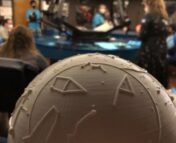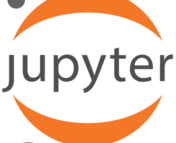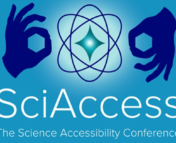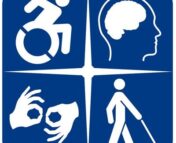Paper Title: Accessibility in astronomy for the visually impaired
Authors: Jake Noel-Storr and Michelle Willebrands
Corresponding Author Affiliation: Faculty of Science and Engineering and Kapteyn Astronomical Institute, University of Groningen, Groningen, The Netherlands
Status: Accepted to Nature Astronomy [ArXiv open access]
This Bite is part of Astrobites’ ongoing efforts to celebrate all cultures and identities in astronomy – Specifically, we’re highlighting disabled astronomers during July as part of Disability Pride Month!
Today’s paper discusses an interview with four people (Dr. Nicolas Bonne, Dr. Cheryl Fogle-Hatch, Dr. Garry Foran, and Dr. Enrique Perez Montero) who are involved with increasing accessibility for people who are blind and visually impaired (BVI) in astronomy. Three of the people interviewed are astronomers or astrophysicists who are blind or visually impaired, and Dr. Pérez-Montero’s work on inclusive astronomy has recently been featured in another Astrobite.
Astronomy has been called a “highly visual science,” but this is a huge barrier to people who are BVI. These interviewees describe challenges they have faced as BVI astronomers, and how the field can evolve to be made more accessible.
What are some of the challenges that face BVI astronomers and students?
Astronomy as a field has a history of depending heavily on visual images in teaching and research. The historical image of an astronomer with their eye up against a telescope is still very pervasive. But in practice, astronomers often use highly sophisticated digital equipment to take and analyze data.
This attitude of astronomy as a visual science is also pervasive in astronomy teaching and outreach. Often people rely on inspiring images of the universe, which are inaccessible to BVI people.
In the field, often data is visualized on a plot or graph, which then also renders it inaccessible. In this case, BVI astronomers rely on others’ ability to describe the plot. This does not allow these astronomers to interpret the data themselves, and this reliance on others’ perspective introduces a natural bias. This also comes into play for academic journal articles – often, the data or conclusions are presented in a graphical format that is inaccessible to BVI readers.
Even when handling data some systems may be more accessible than others. One interviewee gives the example of how different methods of interfacing with a computer can be inaccessible. Often in astronomy and astrophysics, we need to use high-power computer systems to analyze and store huge amounts of data, and to do this we use an interface to give commands. A Graphical User Interface (GUI) uses buttons and colorful visual tools to allow the user to navigate a file system or run code, while a Command Line Interface (CLI, or just “command line”) is typically a single input line which uses commands to do the same tasks. People use GUIs all the time, even without realizing it – one example is on a Windows machine, the “Start” menu with buttons and icons for each application can be considered a GUI. Using the command line is generally accessible for BVI people, while a GUI is much less accessible (or not at all, depending on the GUI).
How can we make astronomy a more accessible field?
The interviewees in the article bring up the concept of using “multi-modal” methods, or incorporating as many sensory modes as possible in teaching and doing research. Students benefit from multi-sensory teaching methods at all levels.
Some way to incorporate other senses are:
- Tactile (touch): using the sense of touch to explore a model. One example of a tactile model is a skymap that can be touched.
- Audio: there are a few ways that sound can be used in the context of astronomy:
- Using sound to present data, which is called sonification. Sonificaiton is an incredible tool that can help to pick out faint sounds in a noisy background (this is also called the “cocktail party” effect).
- Using audio descriptions for images or videos, both to help people understand and describe the image or video for BVI audience members.
These multi-modal methods are an example of incorporating accessible design – the concept that all resources should be accessible for everyone. Accessible resources benefit everyone in the course or research group by providing equal access for everyone by design.
Shifting towards a more accessible culture
One of the most important points made in the interview is that a culture shift in astronomy is needed to incorporate an emphasis on accessibility. When people within the field recognize the importance of accessibility, everyone within the field (students and researchers alike) will benefit.
In education, accessible design needs to be made mainstream. Accessible resources need to be created and utilized in both teaching students and outreach. It is important to include accessibility in the design of facilities and tools from the start to build an inclusive and welcoming culture.
Overall, there is a lot for the field of astronomy to gain by becoming more accessible. This would not only help those who are BVI astronomers, but everyone who interacts with the field.
Edited by: Abby Waggoner
Featured image credit: Astrobites




